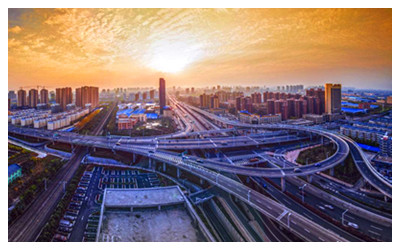Skype: neodalle-travel
Tel: +86 135 7447 2266
E-mail: sales@visitaroundchina.com

 Hefei City, capital of Anhui Province,is located in the centre part of East China, and its transportation system is well-developed. With the whole city's transportation system linked by airport, railway and highway, a solid transportation network is at your service. Due to its fast development in recent years, transportation within and around the city is very convenient, especially for tourists.
Hefei City, capital of Anhui Province,is located in the centre part of East China, and its transportation system is well-developed. With the whole city's transportation system linked by airport, railway and highway, a solid transportation network is at your service. Due to its fast development in recent years, transportation within and around the city is very convenient, especially for tourists.
By Air
Xinqiao International Airport was put into use on May 30, 2013. It mainly serves Hefei city and other cities around. It has one 3,400-meter-long (2.1 miles) runway and one 108,500-square-meter-large (27 acres) terminal. 27 planes can be accommodated in at the same time. Now it serves about 58 airlines, connecting most of the major cities as well as famous domestic tourist cities. The cities mainly include Beijing, Shanghai, Guangzhou, Xian, Shenzhen, Xiamen, Taiyuan, Haikou, Kunming, Hangzhou, Guilin, Sanya, Huangshan, Lijiang and so on. Besides, international flights to Singapore, Seoul, Bangkok, Cheju and so on are operated too. In the coming three years more international flights are planned – some serving destinations as far as Frankfurt.
By Train
Traveling to Hefei, nnother good choice is by train. There are three railway stations in the city.
Hefei Railway Station was put into use in 1935 and reconstructed in 2010. The station is 13 kilometers from Hefei South Railway Station, 6 kilometers from Memorial Temple of Lord Bao and 44 kilometers from Xinqiao International Airport.The station is made up of a two-storey terminal building, the front square (south square) and the north square. There is a special underground passage connecting the two squares.
Hefei South Railway Station was put into service on 17th Oct, 2014. It is about 8 miles (13 km) from Hefei Railway Station, 4 miles (7 km) from Memorial Temple of Lord Bao and 28 miles (45 km) fromXinqiao International Airport.
West Railway Station
It is located in the west end of Wangjiang Road and can be reached by city bus no.111 from the Railway Station. Both stations can reach the neighboring cities of Anhui Province such as Anqing, Bengbu, Wuhu, Haozhou, Huangshan, etc. There are regular trains running to Nanchang starting from the Railway Station at 03:02, 19:42 and 20:29, and arriving at Nanchang at 09:28, 02:25 and 02:39.
By Long-distance bus
As the centre of the highway network of Anhui Province, it is one of the main highway transportation hubs in China. The two main highways are Hefei-Nanjing-Shanghai expressway which runs east-west, and Hefei-Wuhu expressway which runs north-south. The No.206 National Highway and No.312 National Highway are joined together in the city, making it the center of the highway network in Anhui Province.
The long-distance buses from this station can reach many nearby cities including Baishan, Shouxian, Yuexi, Guohe, Daiqiao. Besides, you can also arrive at Sanhe Ancient Town from this station.
City Transportation
Currently, Hefei metro line 1 and line 2 serve the public. Metro line 1 includes 23 stations, connecting Hefei Railway Station and Jiulianwei. Hefei subway line 2 links Nangang and Sanshibu. In addition, subway line 3, line 4 and line 5 are under construction now. By the end of 2020, the rail transit line in the city will reach about 170 kilometers. According to the long-term plan, Hefei is scheduled to have totally 15 subway lines with a length of 523 kilometers.
City-Bus
Currently there are over 100 lines in the city. They usually operate from early morning (06:00) till evening (20:00, or as late as 23:00). The fare is usually CNY1 and it is CNY2 for air-conditioned buses. Children below 4ft (1.3m) can take bus for free. You cannot get change when you are on them, so you need to plan ahead to have the correct amount. Transportation within the city is very convenient although it is sometime every crowded. There are regular routes to most of the scenic spots in the city.
Taxi
Taxi is a good choice to commute in the city if you are tired or would like to save time. The taxi rate differs from car brands (actually vehicle emission volume) and the distances.
 Ask Questions ?
Ask Questions ?